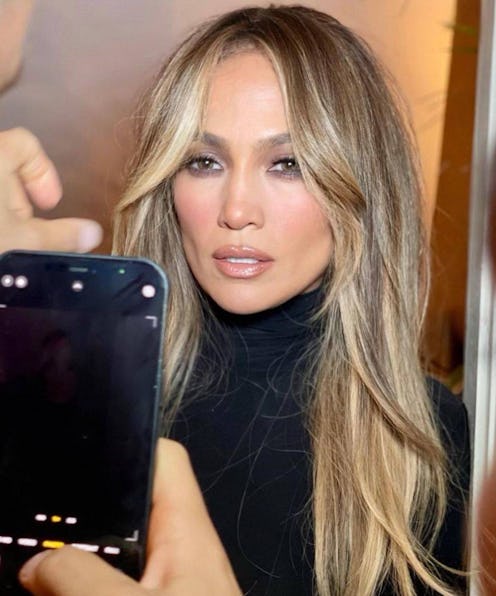Beauty
What Are Waterfall Bangs? A Pro Stylist Explains The ’70s Hair Trend
Everything you need to know.
From face-framing curtain bangs to the more edgy micro fringe (that has been spotted on the likes of Florence Pugh, Olivia Rodrigo, Halsey, and countless others in recent months) — it’s safe to say that shorter hair lengths are all things chic, especially as of late. What’s more, thanks to A-listers like Jenna Ortega and Margot Robbie, haircuts so associated with the ’70s — like shags and loosely textured waves, respectively — are making a serious comeback.
Which hairstyle might incorporate both bangs and an understated 1970s essence, you might ask? Well, say hello to waterfall bangs, the fresh new chop that has TikTok obsessed. Bustle tapped Jason Tavares — a celeb-loved hairstylist and founder of the soon-to-launch, texture-inclusive haircare brand, B Cavi — for everything you need to know about the buzzy ‘do.
“Waterfall bangs are longer bangs that fall around the cheekbone area, seamlessly blending with the rest of the hair,” Tavares says. The result? “A cohesive look with a nod to the ’70s.” And while many hair lengths and hair types can pull waterfall bangs off, he does note that the look is “especially flattering on long, layered haircuts and styled with beachy waves for summer.”
Curtain bangs, too, are a bit more lengthy than traditional bangs — though Tavares notes a significant distinction: “Curtain bangs are primarily characterized by a front-forward look [and] feature hair that can potentially fall on the forehead, while allowing the sides to seamlessly blend with the rest of the hair.” On the other end, waterfall bangs are much more subtle and are typically “suited for hair that is parted in the middle, providing volume when styled inward.”
Waterfall Bangs For Every Hair Texture
Considering the chop? “Waterfall bangs can generally work on any hair texture,” Tavares explains, “however, it's important to consider certain factors when deciding to get waterfall bangs with different hair textures.” Further, he advises consulting with a professional who can assess your hair's specific characteristics and provide personalized advice on what would work with your hair texture and facial structure.
Thin Hair
“Waterfall bangs can add dimension and texture to thin hair, giving the illusion of fuller locks. It's important to consider the length and density of your hair to ensure the bangs blend well and don't appear sparse.”
Thick Hair
“Waterfall bangs can help break up the heaviness of thick hair and add a stylish element. Consider the natural movement and weight of your hair to ensure the waterfall effect is achievable and doesn't become too bulky.”
Curly Hair
“Waterfall bangs can look gorgeous with curly hair, adding an extra layer of visual interest. It's important to work with a stylist experienced in cutting curly hair to ensure the bangs are tailored to your specific curl pattern and don't disrupt the overall shape and bounce of your curls.”
Wavy Hair
“Waterfall bangs can complement wavy hair by enhancing its natural texture and flow. Consider the length and wave pattern of your hair to determine the best placement and length for the bangs to achieve the desired effect.”
This article was originally published on
